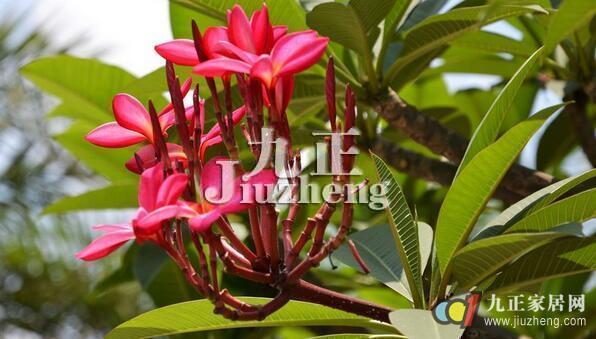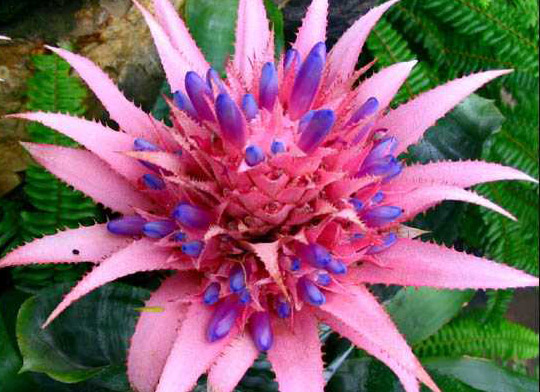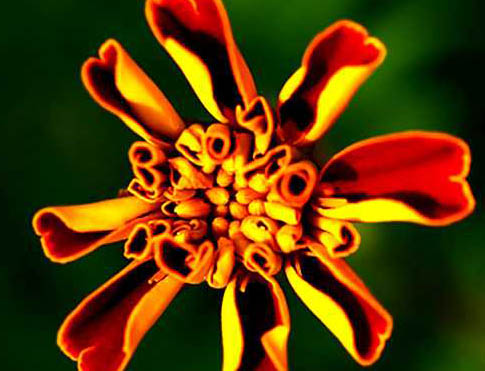How to grow and reproduce eggs
Egg flower is known as Gardenia jasminoides. For little Joe. Cymes, many flowers, white, yellow in the center, sometimes reddish, fragrant, flowering from April to July. Sexual preference for sunny and warm environment, slightly shade-resistant, not cold-resistant, sandy loam with good drainage. The management is more extensive, because the branches are brittle and easy to break, it is appropriate to choose the leeward to the sun, loose and fertile soil.
If the cultivation of hedges should pay attention to pruning, to promote its more new branches, so that the plant shape is neat and full. Small flower varieties should be selected when potted, the flowerpot should be wide but not too deep, and the potted soil should be cultivated with the mixture of peat soil, black mud and river sand. After planting, pour water thoroughly, put in the sunny place to cultivate the flower can be pregnant. If placed in too dark, the branches and leaves are luxuriant, and the flowers are rarely or not flowering.
During the growing season, the basin soil should be kept moist, the temperature in winter is low, and watering should be controlled. After warming up in spring, compound fertilizer can be applied every 10 to 15 days until flowering. Spray water on the branches and leaves in summer to increase the humidity of the air. But do not spray on the flowers, lest the flowers die early. Moving indoors before winter in the north, it is appropriate to put it in the sunny place and keep the room temperature above 5 degrees Celsius. It can be propagated by sowing or cutting.
-cut 1-2-year-old robust branches in early spring for cutting, and then insert them into the sand bed after the cuttings were properly dried □.

Leaves thickly papery, oblong-oblanceolate, apical acute, base narrowly cuneate, 14-30 cm long and 6-8 cm wide, leaf surface dark green; midvein impressed, lateral veins flattened, leaf back light green, midvein slightly raised, lateral veins flattened, only dorsal midvein margin pilose, lateral veins 30-40 on each side, subhorizontal, not reticulate; petiole 4-7 cm long, pubescent. Cymes terminal, 22-32 cm long, 10-15 cm in diam., total pedicel trichotomous, 13-28 cm long, fleshy, pubescent gradually deciduous when old; pedicel pubescent or hairy, ca. 2 cm; Calyx lobes small, broadly ovate, apex rounded, pressed without opening; Corolla crimson, Corolla cylindrical, 1.5-1.7 cm long, ca. 3 mm in diameter. Corolla lobes narrowly Obovate or elliptic, longer than Corolla tube, 3.5-4.5 cm long and 1.5-1.8 cm wide; stamens inserted at base of Corolla tube, filaments short, anthers included; carpels 2, free; each carpel has multiple ovules. Seeds oblong, flattened, ca. 1.5 cm long, 7-9 mm wide, light brown, apex with oblong membranous wings, margin with irregular notches, wings 2-2.8 cm long and ca. 8 mm wide.
The flowering period of red egg flower is from March to September, and the cultivation in fruit stage is rarely fruitful, usually from July to December.
Ecological habits of red egg flower
Red egg flower likes hot and humid climate, resistant to drought, but afraid of waterlogging, born in limestone, cutting propagation is very easy to survive. Red egg flowers like warm, moist, sunny growth environment, summer does not need shade, can be placed in outdoor exposure.
Red egg flower is not strict on soil, so it is suitable to be planted in loose soil with more humus. When planting, it can be slightly exposed and placed indoors after planting. Weak light can be seen after a week, and then it can be placed in a sunny place after half a month.
Red egg flower is a strong positive flower, the more sunshine, the more luxuriant growth, more flowers and fragrance.
Culture method of red egg flower
First, egg flowers are not strict with the soil, and should be planted in loose soil with more humus. When planting, the roots can be slightly exposed and placed indoors after planting. Weak light can be seen after a week, and then it can be placed in a sunny place after half a month. Egg blossom grows rapidly and needs to be changed once every spring, generally into a 30cm flowerpot. The pot soil can be mixed with 4 parts of garden soil, 4 parts of horse dung soil and 2 parts of river sand, with 100 grams of cake fertilizer or sauce dregs and 50 grams of superphosphate or bone powder in each basin. After the pot was changed and planted, Grain Rain was watered thoroughly, and the front and rear of the plant was moved to the outdoor sunny place.
Second, egg flowers like warm, moist, sunny growth environment, summer does not need shade, can be placed in outdoor exposure.
Third, egg blossoms are resistant to drought, but afraid of waterlogging. Therefore, watering should be moderate, grasp the principle of no dry, no watering, no watering, no waterlogging. In the spring and autumn interval, the soil is watered once every day from 1 to 2 days, once in the morning on a sunny day in summer, and once again in the evening if the soil is dry. In the rainy season, attention should be paid to pouring the stagnant water in the basin to prevent rotting roots, and once every ten days and a half months in winter to keep the basin soil slightly moist and dry.
Fourth, egg flowers like fertilizer, on the basin or turn the basin to change soil, it is appropriate to add 20 grams to 30 grams of bone powder, 50 grams to 80 grams of superphosphate (because it is born in calcareous soil, should pay attention to calcium), May to October, 10 to 15 days to apply a weak mature organic fertilizer or nitrogen, phosphorus and potassium compound fertilizer, avoid single application of nitrogen fertilizer, prevent apprentice growth, do not apply fertilizer in winter.
The propagation mode of red egg flower
Red egg flower is the most common use of cutting propagation, cutting is easy to survive, no need to sow propagation.
Red egg flower likes hot and humid climate, resistant to drought, born in limestone, cutting propagation is very easy to survive.
It is generally appropriate to cut the branch from the base of the branch in the middle and last ten days of May, the length of the branch is 20ml 30cm, and there is white milk flowing out from the cut, which should be placed in a cool and ventilated place for 3 days, so that the wound forms a protective film and then cuttings, cuttings with milk are easy to rot. Insert it into a clean vermiculite or sand bed or shallow sand basin, then spray water under the indoor or outdoor shade, spray water every other day to keep the matrix moist. 15 after cutting 20 days moved to the semi-shade, so that it can see weak light, 30 Murray 35 days to take root, 45 days on the basin, cutting seedlings to survive, in time to transplant in the caliber 20cm pot, egg flowers on the soil requirements are not strict, should be planted in the loose soil containing more humus, planting can be slightly exposed roots on the pot, set up indoor after planting, a week later to see weak light, and then half a month can be placed in the sun sufficient place.
Red egg flower is suitable for splicing, splicing or abdominal grafting.
The problem is that there is more milk outflow from the cut wound, which will affect the survival rate of grafting in varying degrees. You can refer to the grafting methods of succulent plants such as banyan trees and desert roses. The time can be arranged from March to April or October, the grafting speed should be fast, the cutting surface should be completed with one knife, and the docking of the cutting layer between the anvil and scion should be completed before a large amount of milk flows out; if there is more milk exudation in the section, it can be quickly wiped off with a piece of clean gauze or paper, then immediately docking the cut of the rootstock, then binding the joint with tape, moisturizing it with a plastic bag, and placing it in a half-shaded place. After the scion survived, the bagging was removed, the binding band was untied, and the normal water and fertilizer management was given.
The floral language of red egg flower
Egg blossom language: give birth to hope, resurrection, rebirth.
Egg blossom period is from May to October, it has no mysterious legend, no elegant temperament, noble appearance, but has a very simple appearance, with five petals to form a fresh, hopeful flower language. Simple and ordinary is like life, so you can always be so close to people and lose distance.
The egg flower Corolla is cylindrical, milky white on the outside, bright yellow in the center, extremely fragrant and spirally dispersed, with white edges and golden hearts, as if egg flowers are wrapped in egg whites. There are two kinds of egg blossoms: White egg flower and red egg flower. Among them, "red egg flower", the flower is bright red, but relatively rare.
After reading the above introduction about the breeding and breeding methods of red egg flower, do you know more about the morphological characteristics of red egg flower? if you want to know more about red egg flower, please continue to pay attention.
Egg flower propagation methods, egg flower four common propagation methods
Egg flower is a positive tree species, sexual preference for high temperature, moist and sunny environment. But it can also grow in a semi-shady environment, but the branches grow only in a shady environment, with few or no leaves, while yellow egg blossoms grow aerial roots on the branches in a shady and humid environment.
The soil suitable for egg flower planting is the acid sandy loam with deep and fertile, good permeability and rich organic matter, which has strong plants, large number of flowers and bright colors. When the soil is barren, the egg flower has poor growth and development, the flower shape is small and the flower color is dim.
Propagation method of egg blossom 1. Cutting propagation
When the egg flower is propagated, the cuttage method which is easier to survive can be used. When the temperature is high, cuttings can be carried out all the year round.
Select the sturdy and mature branches, cut them into branches around 20cm, and wait for the wound to dry before cutting. Cuttings are generally cut on clean sandy soil, spray water after cutting, and keep the soil moist, which can take root in a month. After rooting, it can be transplanted, shading treatment should be carried out in the early stage, and then it can grow normally.
2. Striping propagation
Egg flowers can also be propagated by striping. Striping propagation is mainly carried out in the growing season, but it is less used compared to cuttings.
3. Sowing and reproduction
Frangipani will bear fruit, but not too much. The fruit contains seeds and can be sown.
Sowing the collected seeds is usually carried out on the sand bed, keeping the temperature of germination at 18 ℃-24 ℃, covering a layer of soil when sowing, and watering the right amount to keep the soil moist. Germination is relatively fast. When the seedlings grow to 15cm, they can be transplanted.
4. Grafting propagation
Egg flower is easy to operate if it wants to propagate by grafting, because its survival rate is relatively high. In general, the best season for grafting is spring and autumn, and certain conditions need to be met in winter and summer.
When grafting, select suitable rootstocks and scions for grafting, pay attention to the prevention and control of Rain Water and strong wind, so as not to affect the survival of grafted seedlings.
- Prev

How to reproduce Calyx calyx
The division method is often used in the reproduction of Calyx calyx. After flowering, the tiller buds sprouted at the base of the plant were cut and inserted into the vegetable sand. It is best to wait for the small bud to grow to about 10 cm high, then cut it off from the joint of the mother plant with a clean blade, peel off the lowest leaf of the bud, and then plant it in a culture pot after a few hours.
- Next

Conservation principles of malachite grass
The maintenance principles of malachite grass are as follows: (1) the light regulates that the malachite grass is a positive plant, which requires sufficient sunlight for growth and flowering, and sufficient light is also helpful to prevent the overgrowth of plants. Avoid direct sunlight in the hot season and cool down by shading around noon. (2) the temperature can be reduced by 18 degrees Celsius after temperature control.
Related
- Fuxing push coffee new agricultural production and marketing class: lack of small-scale processing plants
- Jujube rice field leisure farm deep ploughing Yilan for five years to create a space for organic food and play
- Nongyu Farm-A trial of organic papaya for brave women with advanced technology
- Four points for attention in the prevention and control of diseases and insect pests of edible fungi
- How to add nutrient solution to Edible Fungi
- Is there any good way to control edible fungus mites?
- Open Inoculation Technology of Edible Fungi
- Is there any clever way to use fertilizer for edible fungus in winter?
- What agents are used to kill the pathogens of edible fungi in the mushroom shed?
- Rapid drying of Edible Fungi

